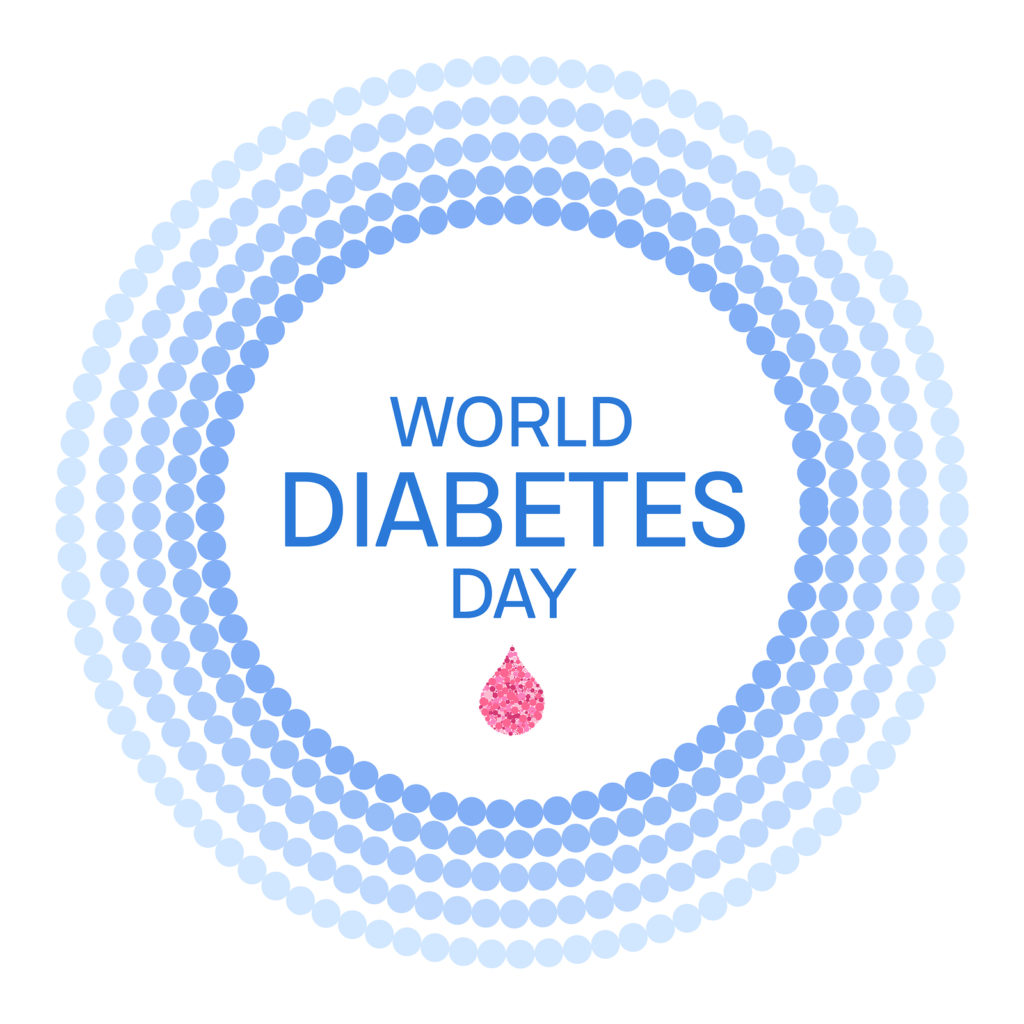Each year, we recognize World Diabetes Day on November 14th. According to the American Diabetes Association, 30.3 million Americans (9.4% of the population) are affected by diabetes and the percentage of Americans age 65 and older reflected 25.2% of the cases.
What Is Diabetes?
Diabetes is a disease in which the body does not produce, or properly use, insulin. Insulin is a hormone produced that allows glucose (sugar) to enter cells and provide the necessary energy for daily activities.
There are 3 types of diabetes:
- Type 1 diabetes develops most often in children and young adults. The immune system destroys insulin-producing cells (beta cells) of the pancreas.
- Type 2 diabetes can develop at any age and is usually preventable. The cells of the body become resistant to insulin, and the pancreas can’t produce enough insulin to override the resistance. Before people develop type 2 diabetes, they almost always have “prediabetes” — blood glucose levels that are higher than normal but not yet high enough to be diagnosed as diabetes.
- Gestational diabetes develops in women during pregnancy. It starts when the body is not able to make and use all the insulin it needs for pregnancy. This condition occurs more often in African Americans, Native Americans, Hispanic Americans, and women with a family history of diabetes.
How Can Physical Therapy Help?
According to moveforwardpt.com, physical therapists help people with diabetes participate in safe, effective exercise programs to improve their ability to move, perform daily activities, reduce their pain, and possibly lower their blood glucose levels. Physical therapy treatments also can help people with diabetes heal any associated skin problems faster than they would without treatment.
Regardless of the type of diabetes you have, regular physical activity is important for your overall health and wellness.
How Can Occupational Therapy Help?
According to AOTA, occupational therapy practitioners can play a strong role in diabetes education and self-management for individuals who are likely to develop the disease as well as those who are already diagnosed. Occupational therapy practitioners can assist patients to develop simple, concrete, measurable, and achievable self-management goals consistent with the seven behaviors advocated by the American Association of Diabetes Educators (AADE). Click HERE for more.
Did you know?
World Diabetes Day (WDD) was created in 1991 by International Diabetes Foundation and the World Health Organization in response to growing concerns about the escalating health threat posed by diabetes. World Diabetes Day became an official United Nations Day in 2006. According to www.diabetes.co.uk, November 14th is a significant date in the diabetes calendar because it marks the birthday of the man who co-discovered insulin, Frederick Banting. Banting discovered insulin in 1922, alongside Charles Best.
Contact one of our outpatient clinics to see if we can assist in your needs.
For more resources, visit:

